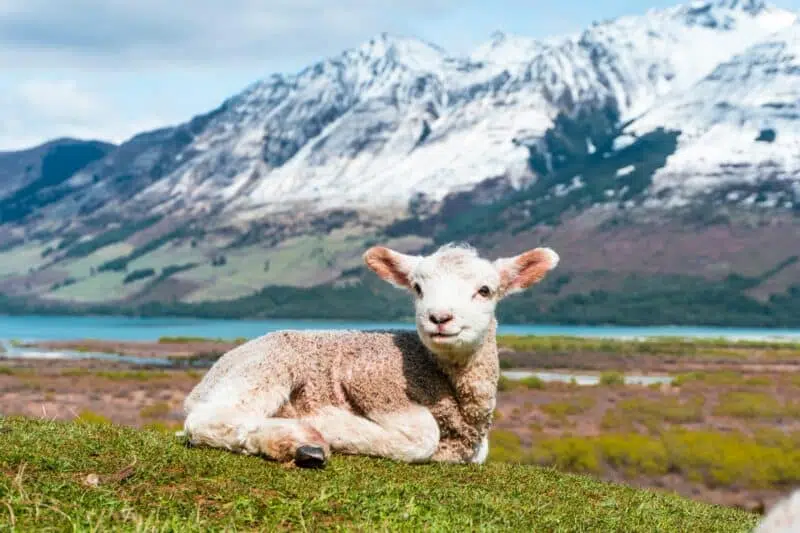Welcome to the Cutest Baby Animals.
We have compiled a list of our favorite Top 10 Cutest Baby Animals in this blog to enjoy. We also have a web story on the cutest baby animals for you.
Whether you are an animal person or not, it’s hard not to get overwhelmed with these tiniest versions of any creature. Don’t believe me? Give it a shot yourself. If you’re bored or stressed, the good vibes that an adorable baby animal brings lift your mood.
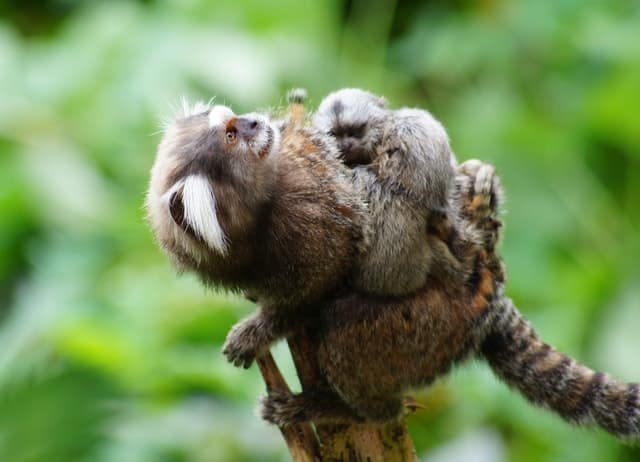
How tiny beings sleep, yawn, smile, and blink their eyes can make you want to hug them. So, if you can’t take time from your busy schedule and go out to the zoo, let me take you on a virtual tour where you get to read about the cutest animal babies.
This article is loaded with mood-lifting baby animal species; this list of Top 10 Cutest Baby Animals would work as therapy and bring an ear-to-ear smile as you read through.
List Of Top 10 Cutest Baby Animals
There are pretty several animal species that live around the world. Irrespective of their nature, even the babies of predators appear to be the cutest.
Here’s presenting the top 10 irresistible baby animals, and you may want to hold and caress them. We have brought together the most adorable baby animals from around the globe.
#1 Red Baby Panda
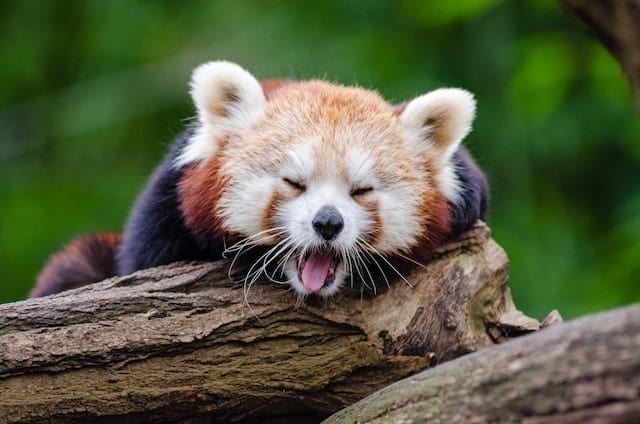
You may have heard about Pandas, and we all know they are a piece of bliss. But are you familiar with red pandas? You’ll surely love these adorable red baby pandas if you aren’t.
Red Pandas have a slight resemblance to bears, but unlike bears, they eat plants and branches of trees.
Unlike black and white pandas, baby red pandas look like baby raccoons or cats, and their furry bodies become bear-like as they grow.
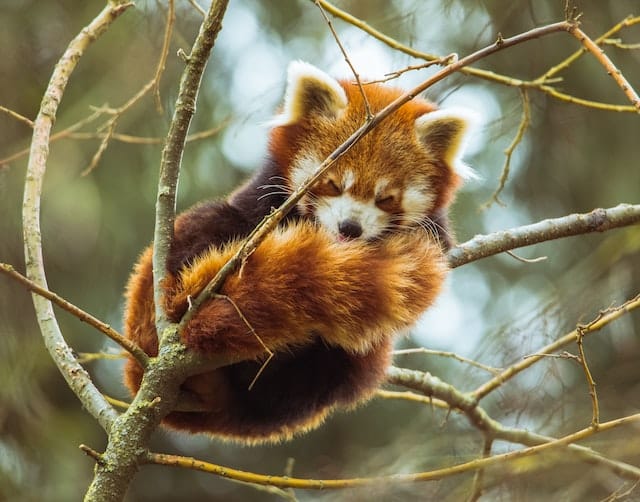
Usually found in the Himalayas, these tiny beings are so lovely that you will want to cuddle them at first sight. When they grow, they start to look like big cat.
· Habitat: Red pandas are found in the Himalayas and other high mountains, where they can be found in temperate, high-altitude forests with bamboo understory.
· Diet: Approximately 95% of the red panda’s diet is bamboo. Red pandas only consume the healthiest leaf tips and vulnerable shoots.
· Breeding: Red pandas breed in the Northern Hemisphere in spring. However, the breeding season in the Southern Hemisphere is summer.
· Sleeping Habit: Red pandas are generally crepuscular or most active in the early morning; however, they can be active anytime. They are awake for roughly half the day and are frequently more active during cooler months.
· Lifespan: Red pandas have a maximum lifespan of 23 years. Males can reproduce after 12 years; however, females cannot.
#2 Baby Giraffe
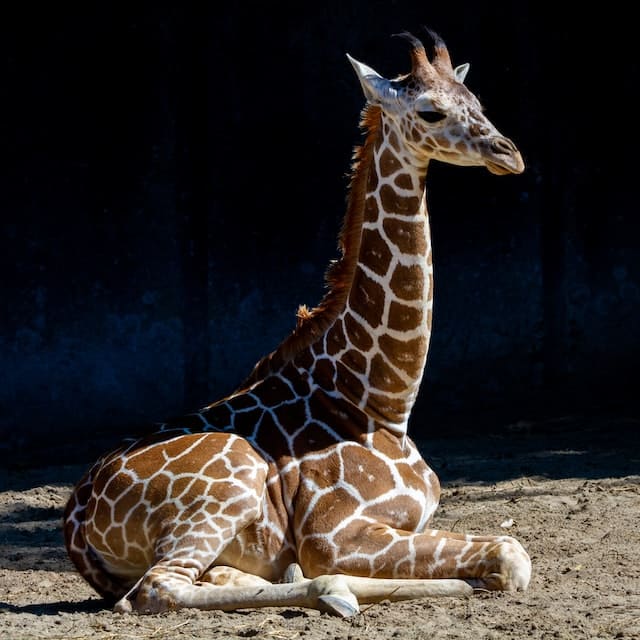
A giraffe’s tall height and exceptionally long necks make them stand out from other animals. Irrespective of the tall appearance, a giraffe has such innocent vibes that melt your heart.
Almost all of us have come across them in the zoo, but have you ever got a chance to check out the baby giraffe? If you haven’t, you should, and you’re going to adore these little golden species who smile back whenever anyone looks at them.
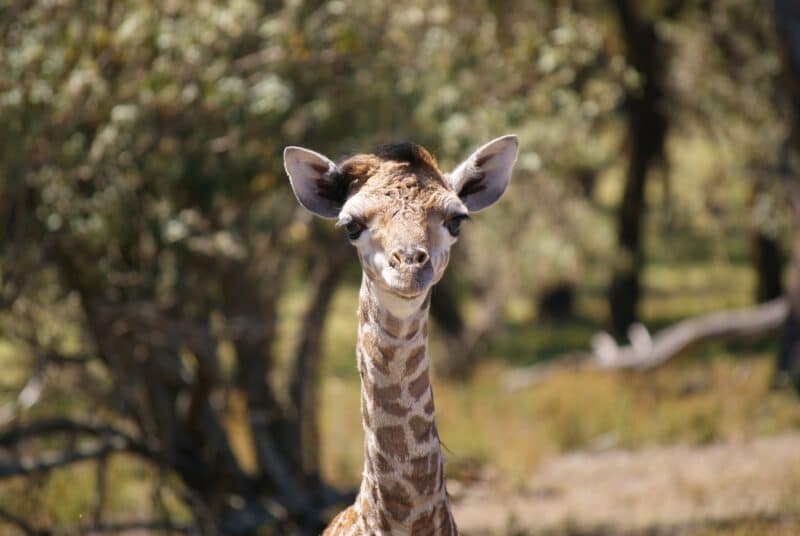
They are born with open eyes and resemble small adults in many ways. While giraffe infants are still within their mothers, their tiny horns are folded flat against their heads, and it takes a few hours to start standing up straight.
· Habitat: Living in Africa, giraffes inhabit savannah forests and semi-arid savannahs. These creatures eat a lot, and since they are so big, they have frequent meals in the mornings and evenings.
· Diet: For the first four to six months, a baby giraffe only consumes its mother’s milk. After that, it starts to consume grass and leaves.
· Breeding: Pregnancy in giraffes typically lasts 15 months, with births occurring every two years. Throughout the year, females give birth and typically attain sexual maturity between the ages of five and seven.
·!– /wp:paragraph –>
· Lifespan: The average lifespan of a giraffe is up to 25 years.
#3 Baby Rabbits
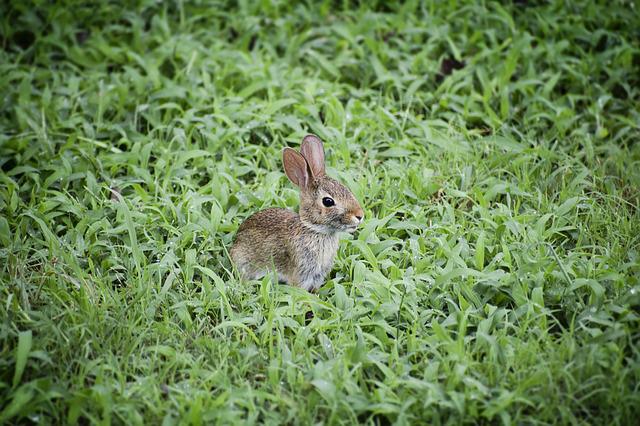
The size of a grown-up rabbit is small enough to fit in your palms. And they can adjust to a comfortable position effortlessly. The baby bunnies can easily fit comfortably in the middle of your hands due to their inch-long size.
As den animals, rabbits burrow underground to stay warm and secure. Mother rabbits bury the entrance to their den after giving birth to a litter.
When they are young, these cute rabbits only consume their mother’s milk to stay alive.
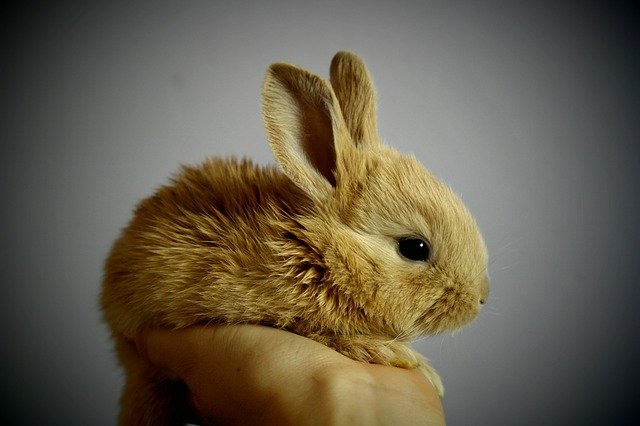
Mother rabbits feed the young more than twice a day and only for 5 to 10 minutes at a time. They receive all their milk for the day in this brief period. The young survive the whole day with the rich milk of the rabbit.
· Habitat: Rabbits stay in woods, forests, and grasslands. By digging tunnels under the earth, they construct their own houses. Warrens are the names of these tube networks, which have sleeping and nesting areas.
· Diet: Rabbits consume carrots, grasses, flowers, and vegetable plants during the summer. They also eat pine needles, buds, and any remaining green plants when winters are close.
· Breeding: February marks the start of the rabbit breeding season, which can last until the end of the summer. Rabbits can have numerous litters a year, requiring 30 days for gestation. A female rabbit will often give birth to four to eight children.
· Sleeping Habit: Most of the time, rabbits sleep all day and become active in the evening or they sleep all night and then start acting generally in the early morning. Every 24-hour cycle will see around eight hours of these irregular periods of sleep.
· Lifespan: There are numerous breeds of rabbits, and they all have various life spans. A mixed-breed dwarf rabbit’s lifespan is just eight years, compared to a huge purebred rabbit’s potential lifespan of ten.
#4 Baby Hedgehog
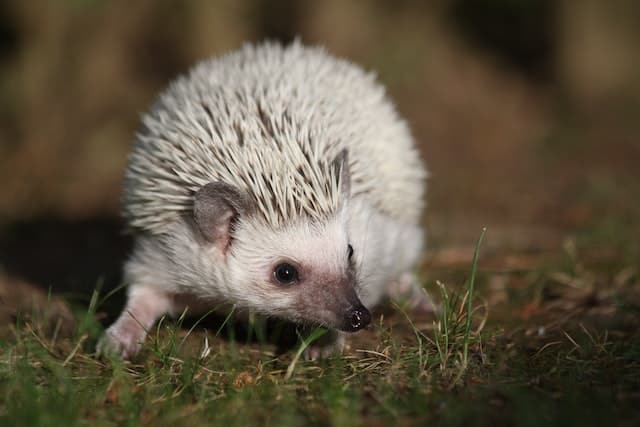
A baby hedgehog is another adorable miniature among the top 10 cutest baby animals that instantly makes you fall in love with them. A young hedgehog is born blind, and it takes them two to three weeks for their eyes to open.
From birth until weaning, the life of a young hedgehog is unpredictable. The infants are little blobs that don’t do much. They initially resemble a swollen tongue before “shrinking” into their quills.
Although you could occasionally hear a tiny peep, it’s unlikely that they would leave the nest. The face is wrinkled, with closed eyes, floppy ears, and undefined facial characteristics.
Baby hedgehogs may have some bruising at birth and may not have pigmentation. Depending on their hue when they grow up, some newborns will become darker with time.
· Habitat: Different hedgehog species inhabit various habitat types. Some species are found in arid environments like deserts, while others are in temperate environments like woods and meadows.
· Diet: Worms, caterpillars, beetles, and millipedes are the main invertebrate species in their diet. In addition to these, they also consume a variety of other insects. They occasionally prey on frogs, birds’ eggs, and fallen fruit.
· Breeding: Hedgehogs can breed up to the second year of life when they become sexually mature. Their gestation periods typically last 35 days; however, they can be anywhere from 33 to 42 days long.
· Sleeping Habit: Hedgehogs nap for 12 to 14 hours each day. The season also has an impact. In frigid conditions, they might sleep up to 18 hours daily.
· Lifespan: A domesticated hedgehog can survive for seven years or longer with good care, compared to the two to three years that a wild hedgehog typically lives.
#5 Baby Elephant
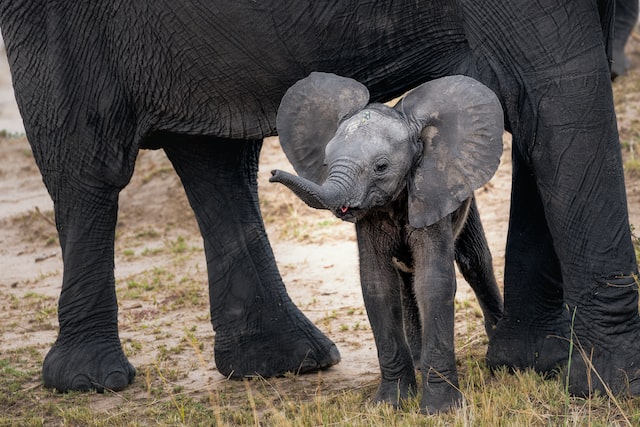
Unlike the giant, elephants are grass-eating mammals who do not tend to harm others unless anyone provokes them. Elephant calves weigh only about 300 pounds at birth while potentially developing into one of the world’s most enormous land creatures.
When rushing, baby elephants can never lift all four feet off the ground. An infant elephant typically stands three feet tall and weighs 200 to 300 pounds.
They gain weight quickly as they mature and can weigh up to 6800 kilograms when they are completely matured.
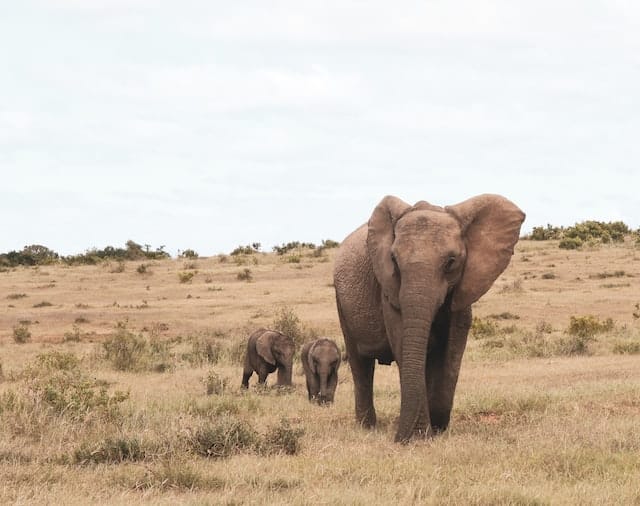
Baby elephants learn to utilize their trunks by playing in the water and swinging them back and forth; they do not naturally know how to do this.
· Habitat: Although they can be found in various environments, including tropical and subtropical areas of Africa and Asia, they are most frequently found in savannas, grasslands, and woodlands.
· Diet: Elephants only consume plants and shrubs in their natural habitat. They consume a broad variety of plants in the wild and are ardent vegetarians. Their diet is based on available options in their habitat at a certain time.
· Breeding: Elephants give birth after 18 to 22 months. An elephant cannot work during her final year of pregnancy or for the next three to four years while nursing.
· Sleeping Habit: Elephants in the wild only get 2 hours of sleep per night, making them the least heavy sleepers among mammals. Previous research has examined these habits in caged elephants, which sleep between three and seven hours daily.
· Lifespan: Elephants raised in captivity live longer than those raised in the wild. In contrast, they only reach about 60 years old in the wild, although they can live up to 80 years or more in captivity.
#6 Baby Dolphin
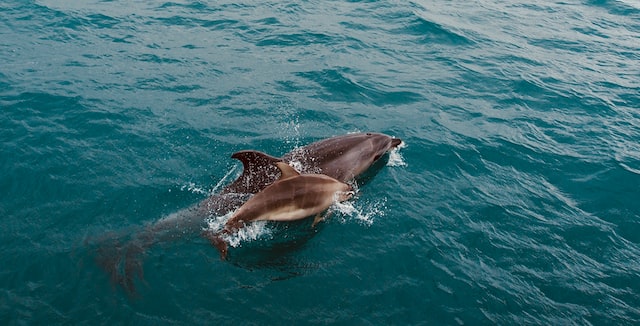
When thinking about sea creatures, the first thought that comes to mind is sharks and other predators. However, there is another vast but adorable kind of water resident who can be the most playful mate. Yes, the dolphins.
You would suppose that baby dolphins can breathe underwater like fish because they are aquatic creatures. But this is untrue; both parents and young dolphins lack gills, making it difficult for them to breathe underwater.
Surprised? Your amazement at learning that dolphin calves are mammals is understandable. Some of the cutest marine creatures in the world include baby dolphin calves. Since they are born with mustaches, they utilize their tongues as straws.
Calves of dolphins have no control over how much they eat. They are born with imperfect vision, so newborn dolphins require a specialized method to find their moms during the first few days of their lives.
· Habitat: Dolphins are mammals that inhabit watery environments. They are found across the world’s seas, and oceans, and many reside near the coast or in locations with shallower water.
· Diet: They eat a variety of creatures, such as fish, calamari, crabs, shrimp, and octopus. They grip their prey with their powerful teeth before swallowing it whole or tearing it into pieces.
· Breeding: Most dolphins reach sexual maturity between 5 and 8. Dolphin pregnancies can last anywhere between 11 and 17 months. Every one to six years, they give birth to a single calf, which they feed milk to through their nipples.
· Sleeping Habits: Dolphins frequently lie still at the water’s surface while they sleep, breathing normally. They also occasionally move slowly and steadily at the surface while dozing. Likewise, they periodically come to the surface to breathe.
· Lifespan: The lifespan of a dolphin varies depending on its species. Their ages range from 15 to 16 on average. Some of them, however, have a lifespan of up to 40 years.
#7 Lamb
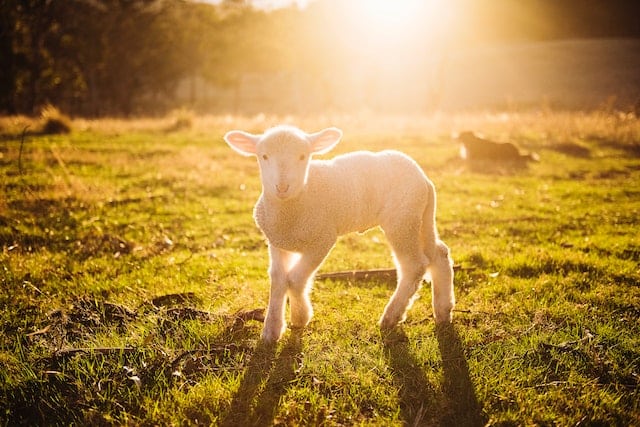
Lambs are sheep that are younger than one year old. When exploring the top 10 cutest baby animals, we can’t resist this cute baby who looks as pure as snow.
This adorable miniature is covered with heavy curly hair.
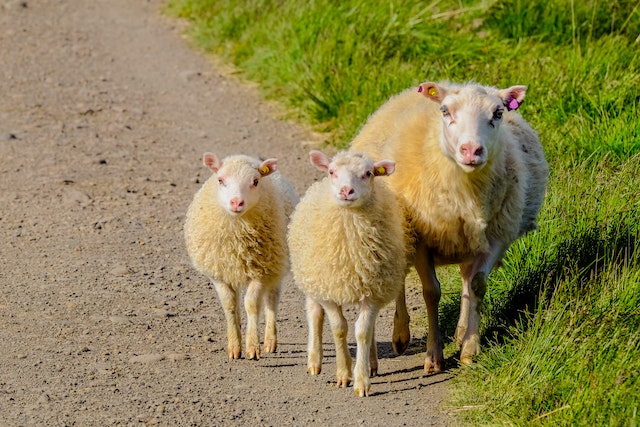
Baby sheep complete practically all their tasks standing up because they are ruminants. Their fur is both water-resistant and incredibly dense. On the other hand, lambs have extremely soft but quite thick hair.
· Habitat: Present worldwide, there are domestic sheep that coexist with people. They adapt to a variety of environments, from desert settings to grasslands.
· Diet: Lamb is a member of the speculative family of mammals, with special digestive systems that allow them to survive on grass and fodder plants.
· Breeding: The best reproduction rate depends on the farm, the production strategy, and the region. Sheep reproduce seasonally in their natural condition, giving birth to young when it is most likely that they will survive.
· Sleeping Habits: Sheep sleep primarily at night because, like humans, they are diurnal. They might only get about five hours of sleep each day.
· Lifespan: Sheep has an average lifespan of 10 to 12 years; however, they stop being “commercially productive” at a little under 5 years old.
#8 Baby Seal
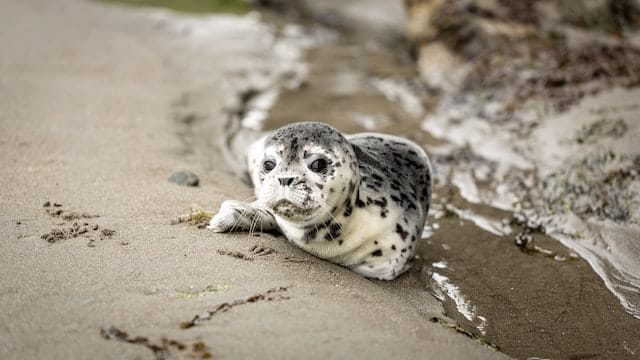
Think about the most playful animals; the seal is one of those most friendly non-human mates. Pups are used for young seals, regarded as pups from birth until weaning at about a year old.
While learning to hunt, baby seals lose almost half of their body weight, whether male or female; seals reach adulthood around age six and live for about 30 years.
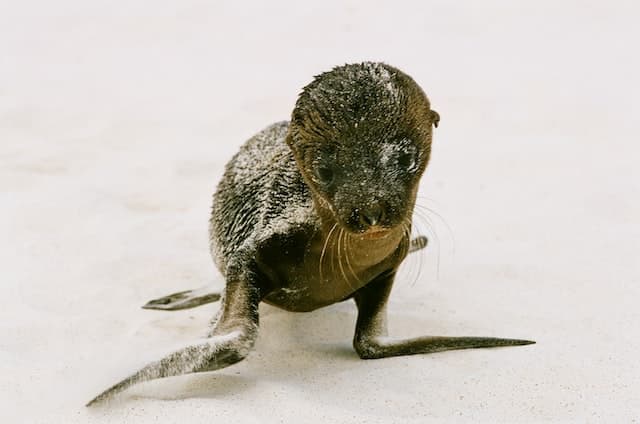
Baby seals and their moms have a particular affinity. Not only will a seal pup’s mother respond immediately to its scream for help, but she can also identify the newborn crying as her own.
· Habitat: Most seals dwell in the Arctic and Antarctic oceans and can be found on most cold-water shores.
· Diet: Since seals are carnivores, meat makes up their whole diet. They usually eat fish, but they will also consume other seafood like squid and lobster.
· Breeding: Male seals fight each other to gain supremacy during the breeding season, frequently leaving their chests calloused. From December to March, baby seals are born.
· Sleeping Habits: Seals snooze in the water and on land. They go off to sleep while standing on the water or drifting horizontally.
· Lifespan: It has been reported that seals can live for beyond 30 years. However, harbor seals can live for up to 25 to 30 years.
#9 Fawn
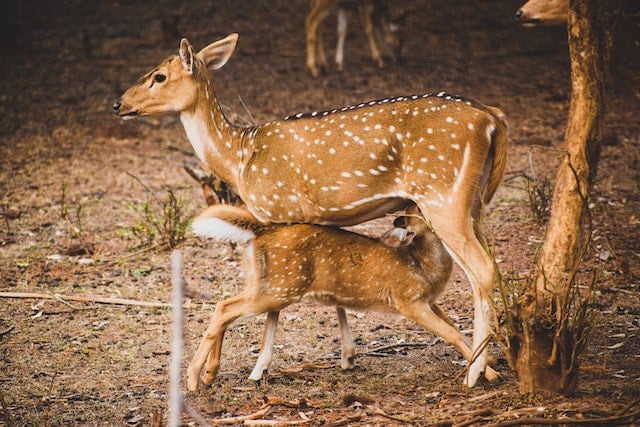
Discussing the top 10 cutest baby animals, how can we ignore the charming baby deer? The baby deer is called a fawn and is much more adorable than the grown-up deer.
Deer calves typically weigh five to eight pounds when they are born.
For the first two to three weeks of life, fawns only consume their mother’s milk until they can taste the grass. To prevent luring predators to their young, moms leave their young fawns alone while they go to feed.
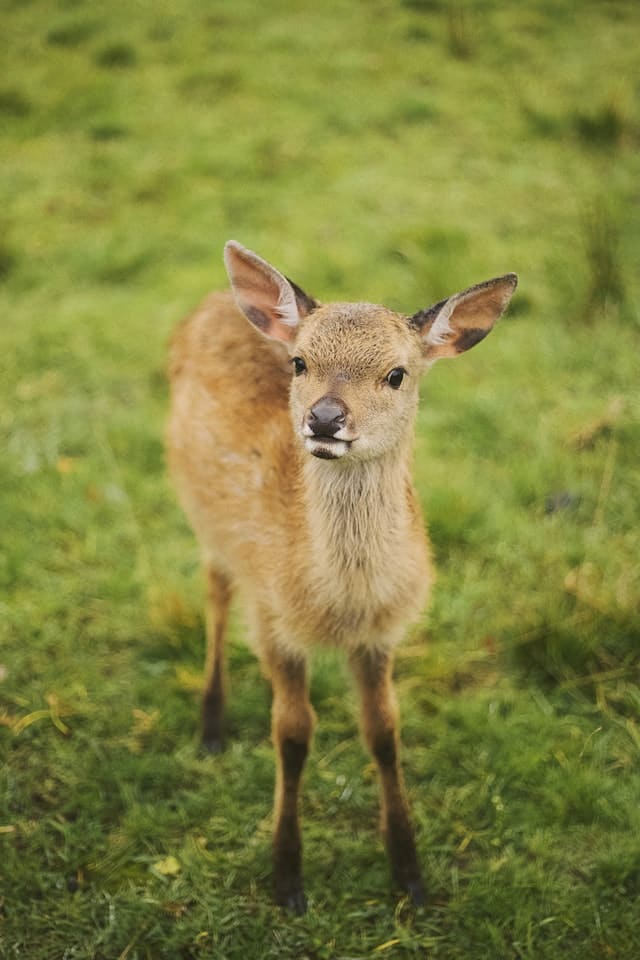
Habitat: Deer are adaptable animals that can live in various settings but thrive best in grassland and forests.
Diet: Deer are herbivores, which means they only eat plant material. Deer eat various plants, grasses, and nuts in their diet.
Breeding: The deer breeding season lasts from September to December, with October being the peak month.
Sleeping Habits: Deer sleep for brief periods at times when resting so they may stay vigilant, and their heads are continually turning. A deer’s sleep cycle lasts between 30 and 3 minutes while dozing.
Lifespan: The average lifespan of a male deer is six years. However, women typically live roughly two more years than male deer.
#10 Baby Skunk
So, here we have arrived at the last but not least number from our top 10 cutest baby animals list. Skunk pups are born blind, and they can’t open their eyes until they turn to become three weeks old.
They require their mother’s milk for one to two months because they are mammals and need it for nutrition. Soon as their fur begins to fill in, their characteristic black-and-white markings become visible. Skunk pups spend roughly three to four months with their mother.
· Habitat: Skunks can be widely found in developed regions, open grasslands, scrub, and woods.
· Diet: Skunks are omnivorous, consuming both plant and animal matter, and their diets vary depending upon the season.
· Breeding: The gestation period for skunks is roughly 63 days, and the breeding season lasts from February to March.
· Sleeping Habits: Skunks are nocturnal animals usually active from evening until dawn.
· Lifespan: Skunks typically live for seven years in the wild. They can, however, live for up to 10 years with human care.
Summary of Top 10 Cutest Baby Animals
The world is full of trillions of species, and many must still be undercover. When talking about picking the cutest living beings from wildlife, it is impossible to find the top 10 cutest baby animals.
However, we have listed ten extremely adorable animal species that can make you smile right when looking at them.
If you enjoyed this blog, you might enjoy some of our others! Check them out below…
Top 10 Newly Discovered Animals , Top 10 Most Endangered Birds or about the Top 10 Cutest Animals.
- Best Places to See Brown Bears - April 19, 2024
- Animals in Greece - April 19, 2024
- Pangolins: The Complete Guide - April 19, 2024

